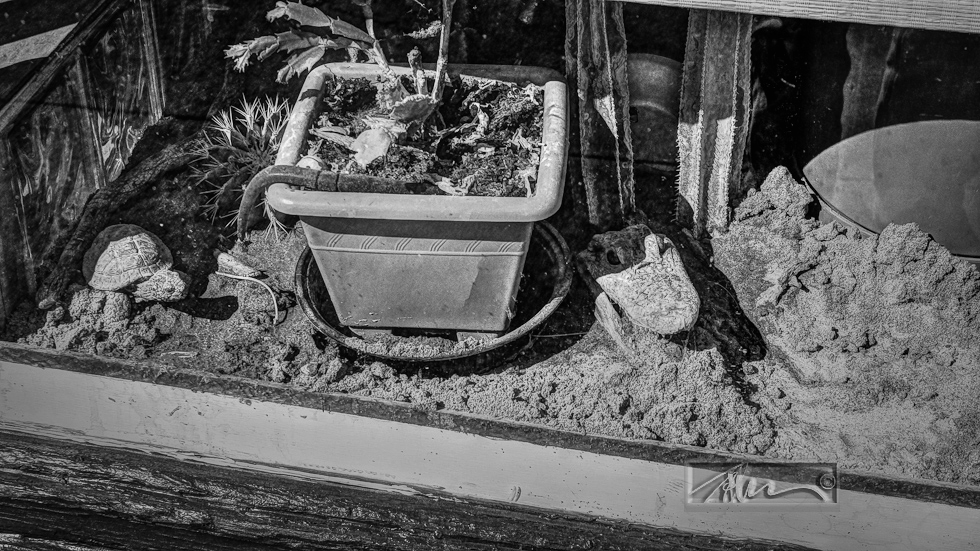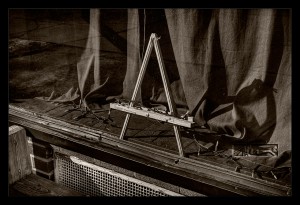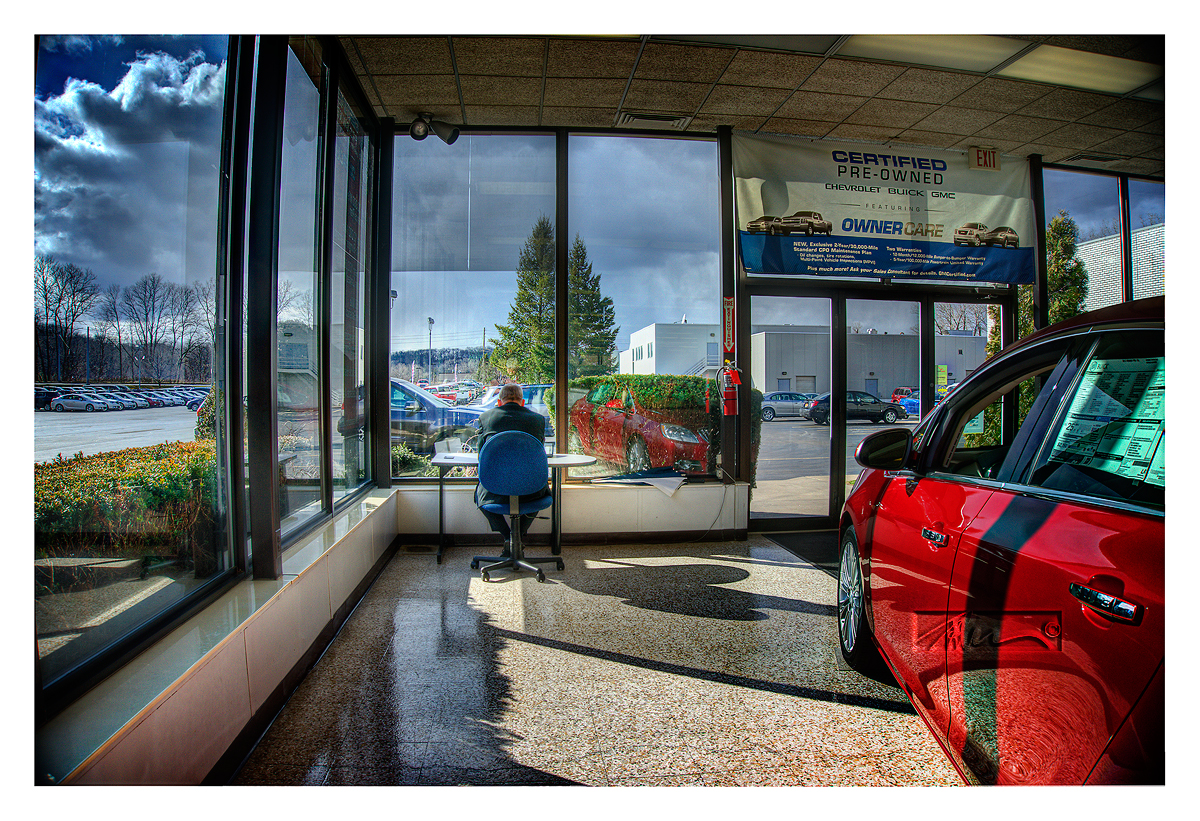It seems as though there is a fine line between cliché and banality, which is acceptable in photographic circles today.
Cliché and banality are both very close in definition, yet they are also used quite often to distinguish between certain types of photographs.
I believe that there are subjects that are easily transformed into either of these classifications. It would appear that banality is an acceptable subject matter for many photographers. Cliché on the other hand is usually regarded in a bad light for its redundancy and therefore, lack of originality. But, I believe there is more to it than that.
Some of my favorite photographers shoot what I call banal subject matter. One of my favorites is William Eggleston, who is probably the master of banality. In this sense, the word implies places, things or events of everyday life. The subjects usually include urban/suburban/rural landscape, portraits of people in their environments and scenes of fairly ordinary background.
“Eudora Welty suggests that Eggleston sees the complexity and beauty of the mundane world: “The extraordinary, compelling, honest, beautiful and unsparing photographs all have to do with the quality of our lives in the ongoing world: they succeed in showing us the grain of the present, like the cross-section of a tree…. They focus on the mundane world. But no subject is fuller of implications than the mundane world!” Mark Holborn, in his introduction to Ancient and Modern writes about the dark undercurrent of these mundane scenes as viewed through Eggleston’s lens: “[Eggleston’s] subjects are, on the surface, the ordinary inhabitants and environs of suburban Memphis and Mississippi–friends, family, barbecues, back yards, a tricycle and the clutter of the mundane. The normality of these subjects is deceptive, for behind the images there is a sense of lurking danger.” – Wikipedia
On the other hand, there are those who shoot common things such as dilapidated buildings, waterfalls, sunsets and shorelines with dramatic clouds. Most of these things are also considered cliché subjects because they seem to be almost carbon copies of all the other images we see of them. They are the post cards and the calendars that usually fail to rise above the obvious. They tend to live within our expectations.
I guess my question is – What is the difference between subjects that are considered everyday types (banal) and those, which fall into the “I’ve seen this a million times before” (cliché) types?
I believe there needs to be some clarification. In my mind, the differences are much greater than what the definitions imply. Their use in describing images can be confusing and in many cases misunderstood. They are somewhat ambiguous terms.
Here is how I see them:
Banality
The act of shooting a banal subject, when done through a caring (concerned and sympathetic) eye, tends to raise the subject to a new level of awareness of something much bigger and more profound. There is an underlying ‘something’ that is elevated through the act of photographic framing. The elements come together in a way that offers clarity to what might otherwise be seen as trite. This kind of subject matter is one of the more difficult subjects to shoot. It takes a heightened sense of things in order to make successful and artistic images from banal subject matter. Yet they are everywhere. Because they are so ubiquitous, the subjects require contemplation, insight and uncommon awareness.
Cliché
On the other hand, it seems to me that cliché has more to do with finding and shooting only those subjects, which are considered ‘photogenic’ subject matter. They tend to be those subjects that we see in most of the inline “Photo websites”. They are the images we see of sunsets, pretty faces, animals and waterfalls. They are about the things we want to see, rather than that stuff, which is along the way. The subjects are more fantasy than reality. The cliché tends to be something of beauty, desirable and/or romantic. The cliché is one that sells cameras and other goods, makes people happy, shows us the beautiful and creates a sense that all is OK. The cliché is a product of what we might all want the world to be like. It makes quiet calm at the doctors office and tends to be purchased for above the couch. It is almost always shallow and unoriginal. In the scheme of the now, it is mostly a fabrication. With cliché we tend to travel far and wide to get to what we think is worthwhile subject. In that sense, it fails to see most of the real world. It only sees what it wants to see. It buries our heads in a pipe dream.
There is nothing wrong with showing the beautiful. In fact, we need to see the beauty as well as that which is not considered beautiful. We need to see it, especially when the world is being man-altered at the rapid rate it is doing so. The reality is that we need to be aware of everything our world has to offer. We need to know that there are things worth saving, that the world has magnificence. However, we need to see it all in the most truthful fashion we can find.
But it is equally important to see the realities that banality can show us. Banality is to me all that other stuff that we seem to ignore. Believe me, I would wish a lot of it away if I could. But at least in photographic terms, banality is everyday life. Banality is the real stuff that most of us do not pay much attention to. It is the stuff that we turn from or don’t see, because it is everywhere. It is the shadow that we seem to forget. It is what we drive right past on our way to capture the magnificent cliché. But banality is where we find truth. It shows us our real world, our predicaments, our hope, our failures, our inhumanity as well as our humanity. It is like a mirror in that it shows us ourselves.
We need to see the whole world. That means that we need to pay attention to all of the good, all of the bad and all of the ugly. We need to face the truths of our lives.
By definition, the differences between cliché and banality may not seem that far apart. But they can be the differences that just might open our eyes to new understandings of our reality, our world and the human condition.
To me, the difference is huge. It is what defines most of what I consider great photography. The best of photography is not about cliché, but about that portion of reality that begs to be seen, asks for a voice and pleads for an answer.
At times, banality may seem like cliché. They may even cross paths. But when you look a little harder, open your eyes and focus your mind, you just might see the difference. When you do, you just might change your way of viewing the world. You just might begin to see things differently.
And that, I hope will be a step toward changing the world.
Please have a look at some of my other posts here.
NOTICE of Copyright: THIS POSTING AS WELL AS ALL PHOTOGRAPHS, GALLERY IMAGES, AND ILLUSTRATIONS ARE COPYRIGHT © JOHN NEEL AND ARE NOT TO BE USED FOR ANY PURPOSE WITHOUT WRITTEN CONSENT FROM THE WRITER, THE PHOTOGRAPHER AND/OR lensgarden.com. THE IDEAS EXPRESSED ARE THE PROPERTY OF THE PHOTOGRAPHER AND THE AUTHOR.




